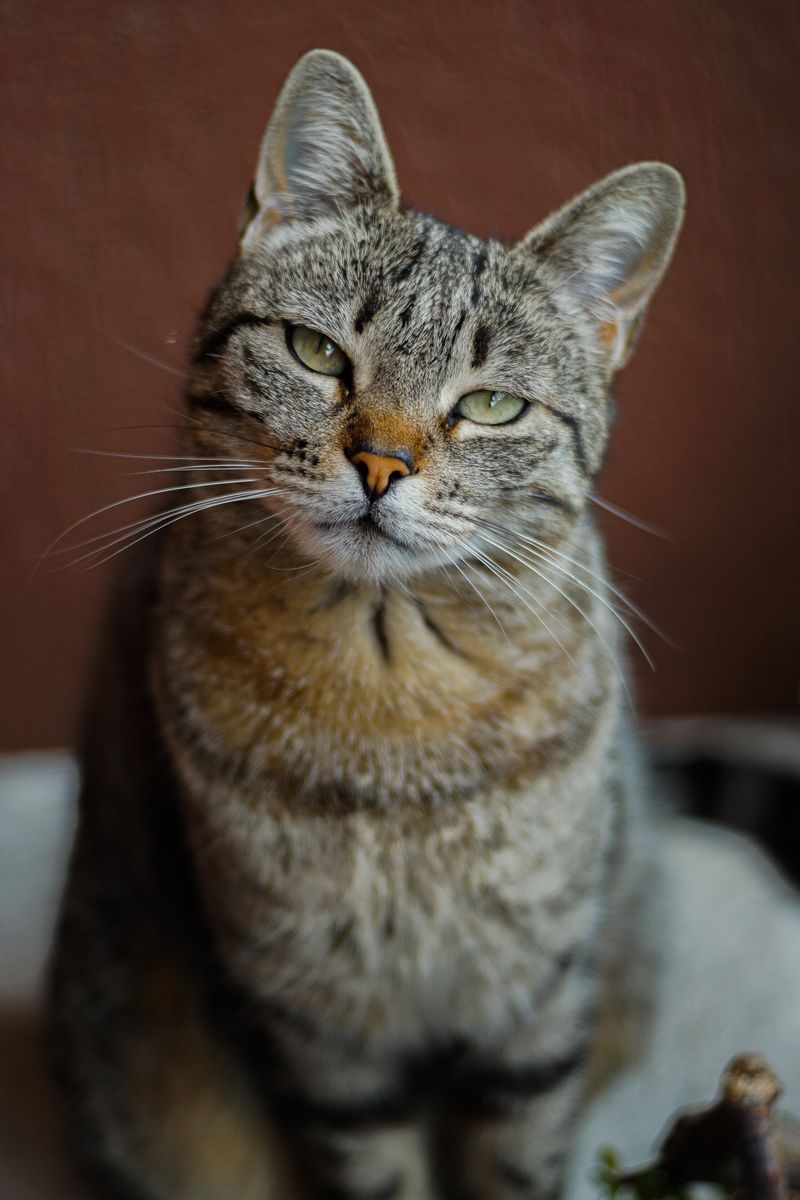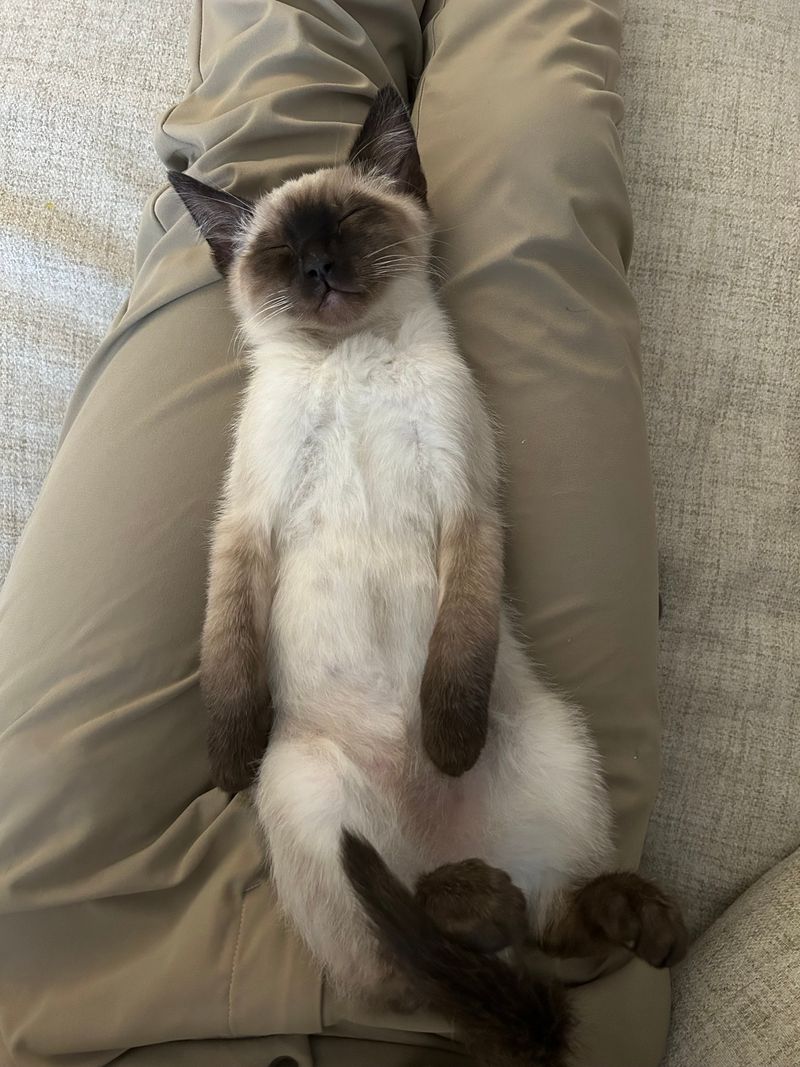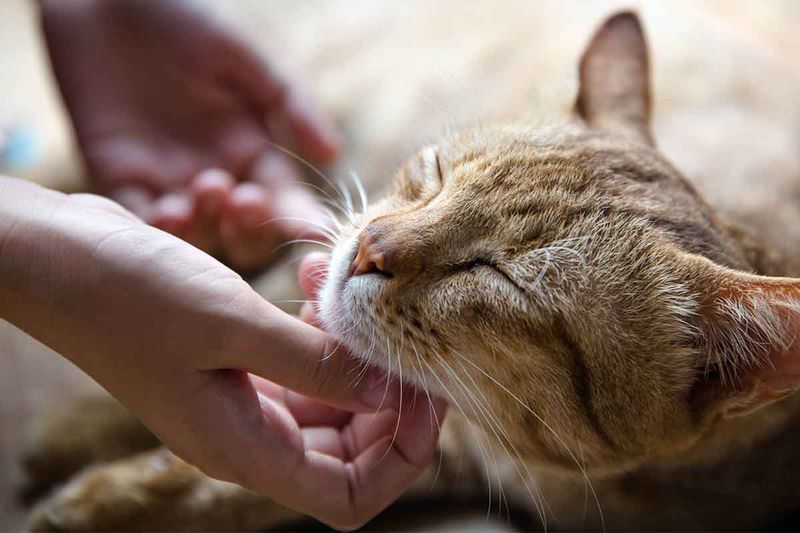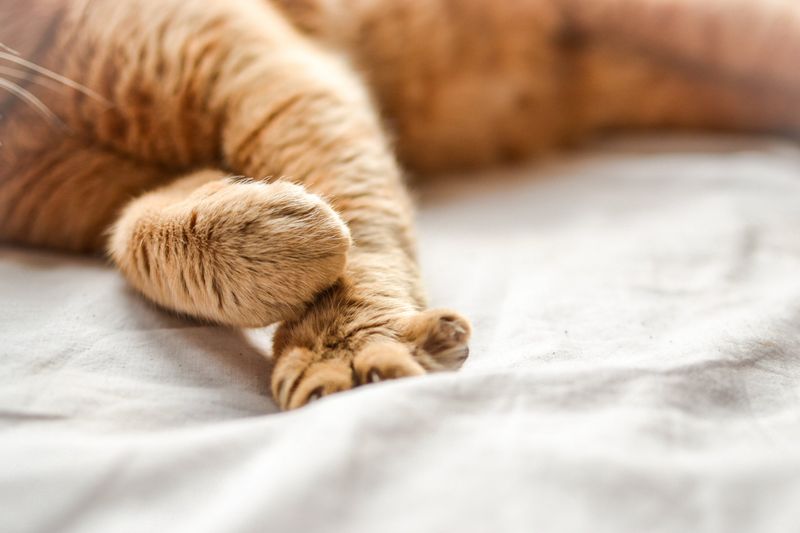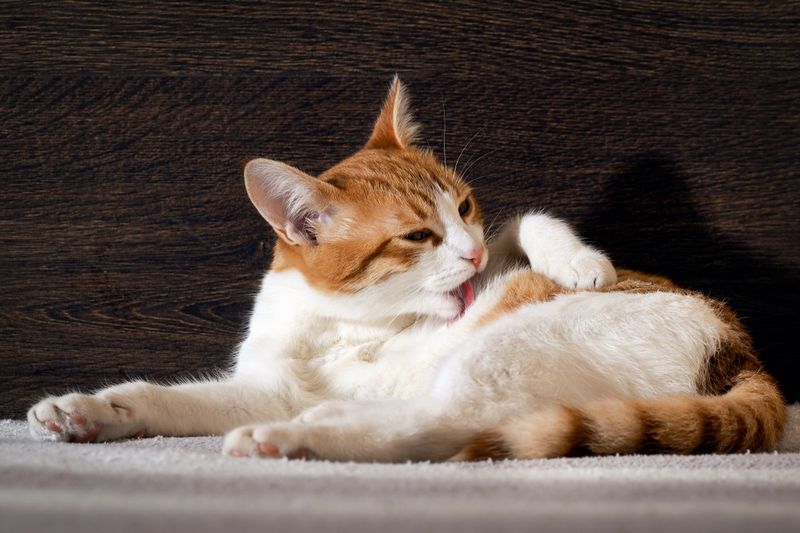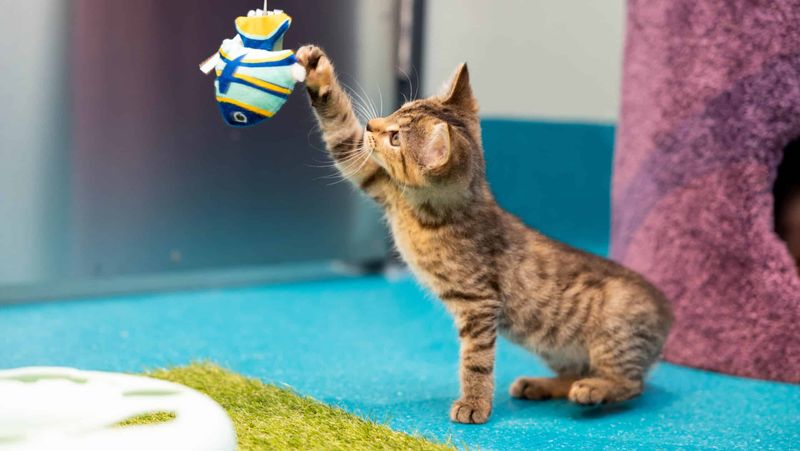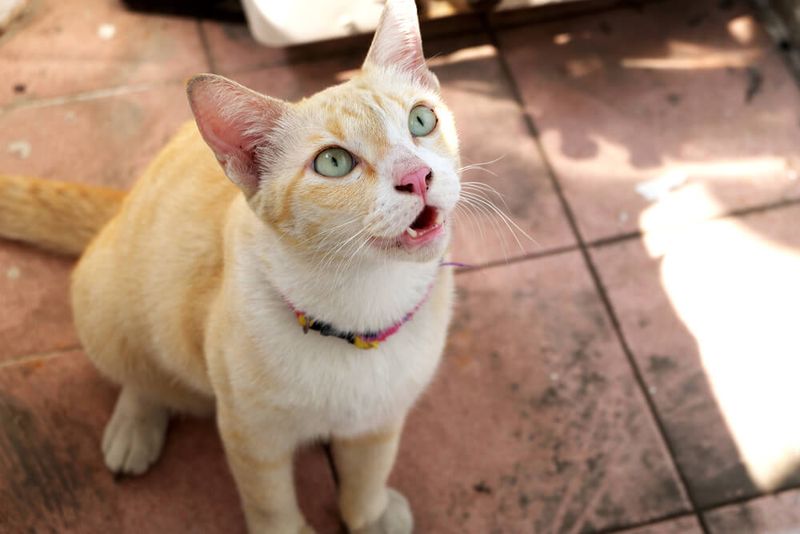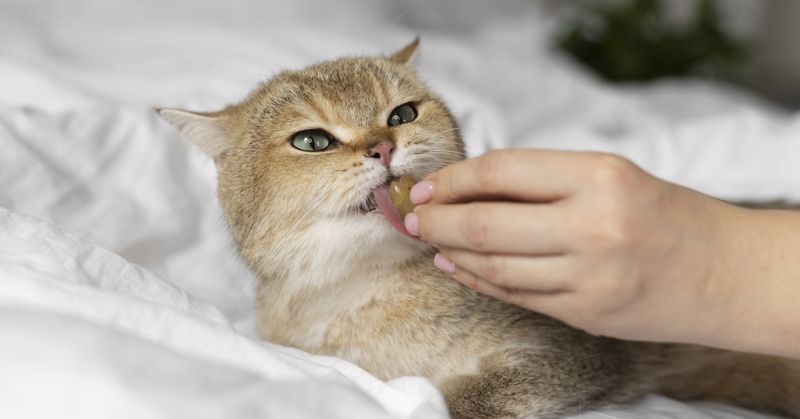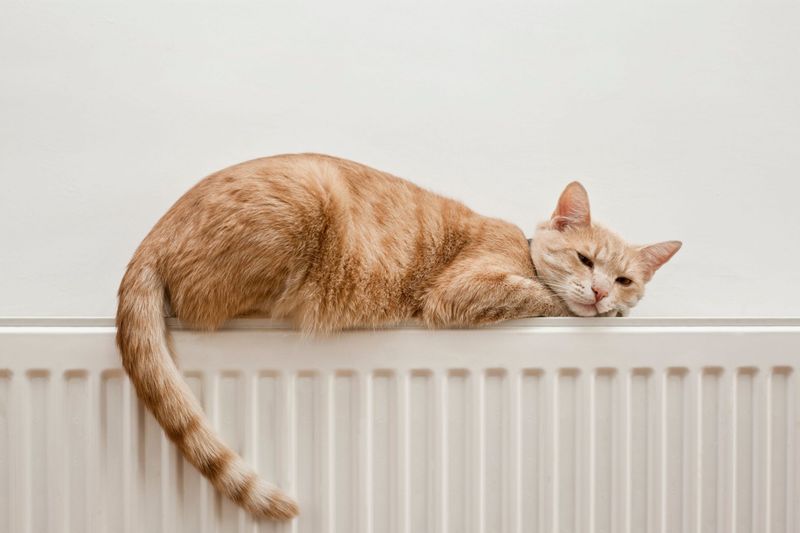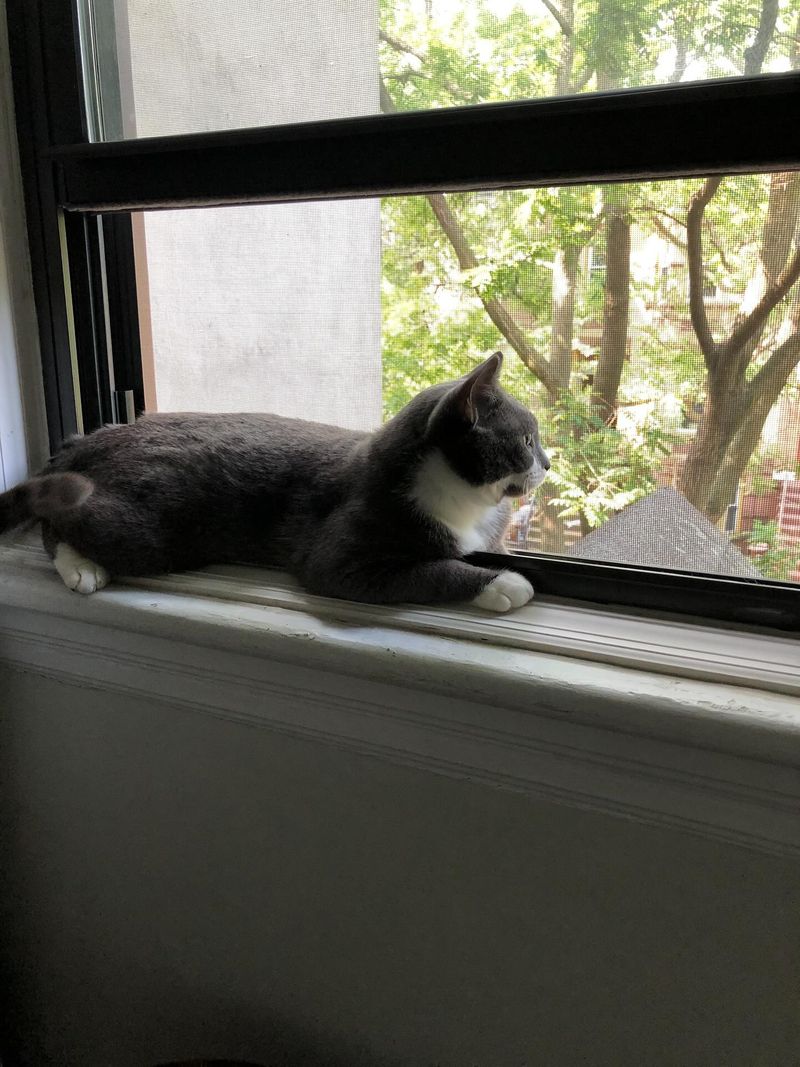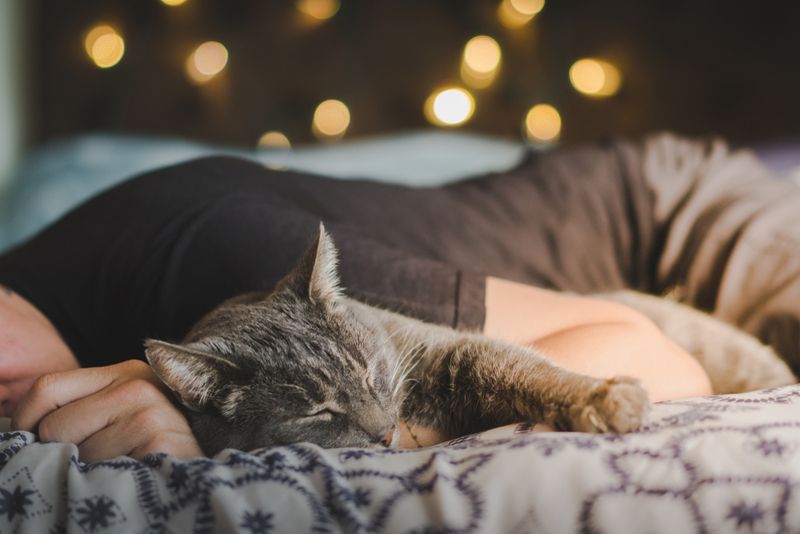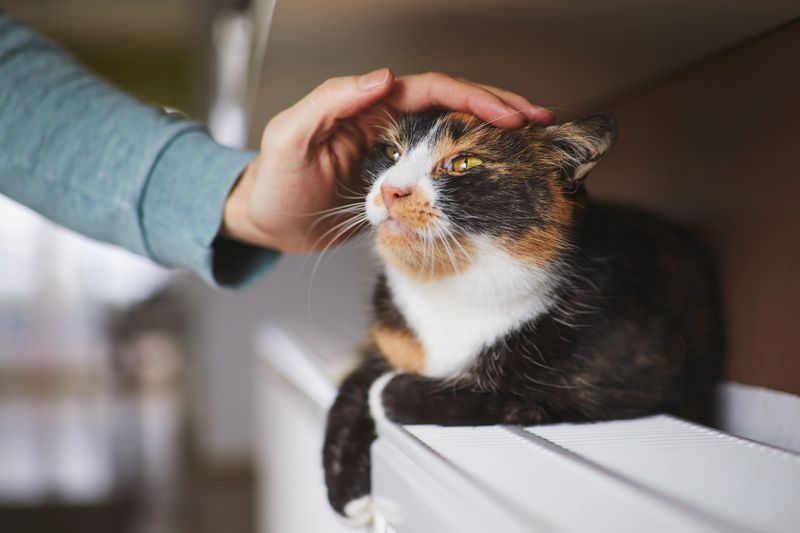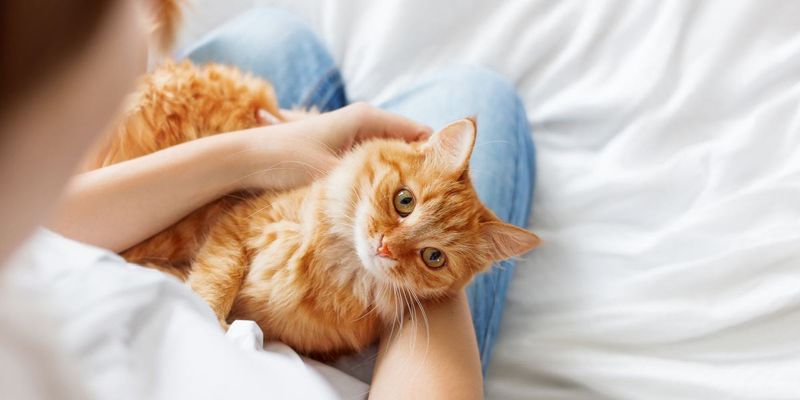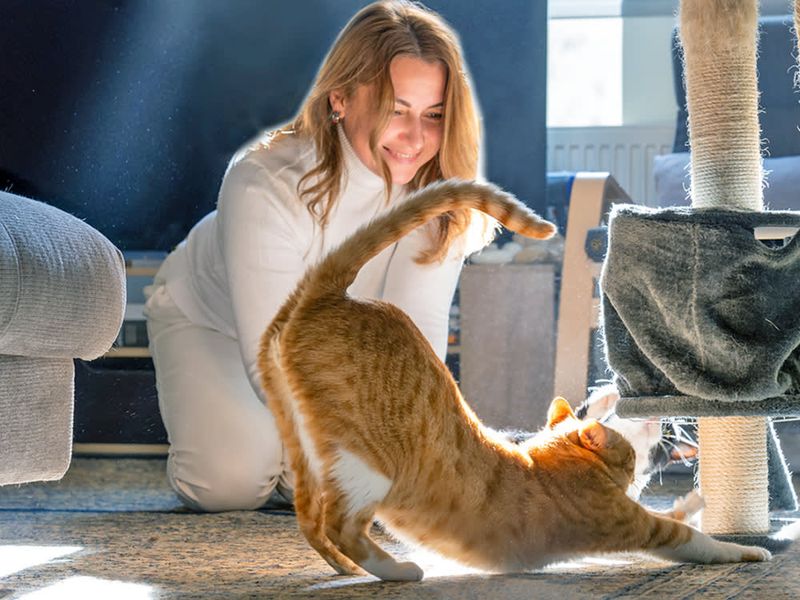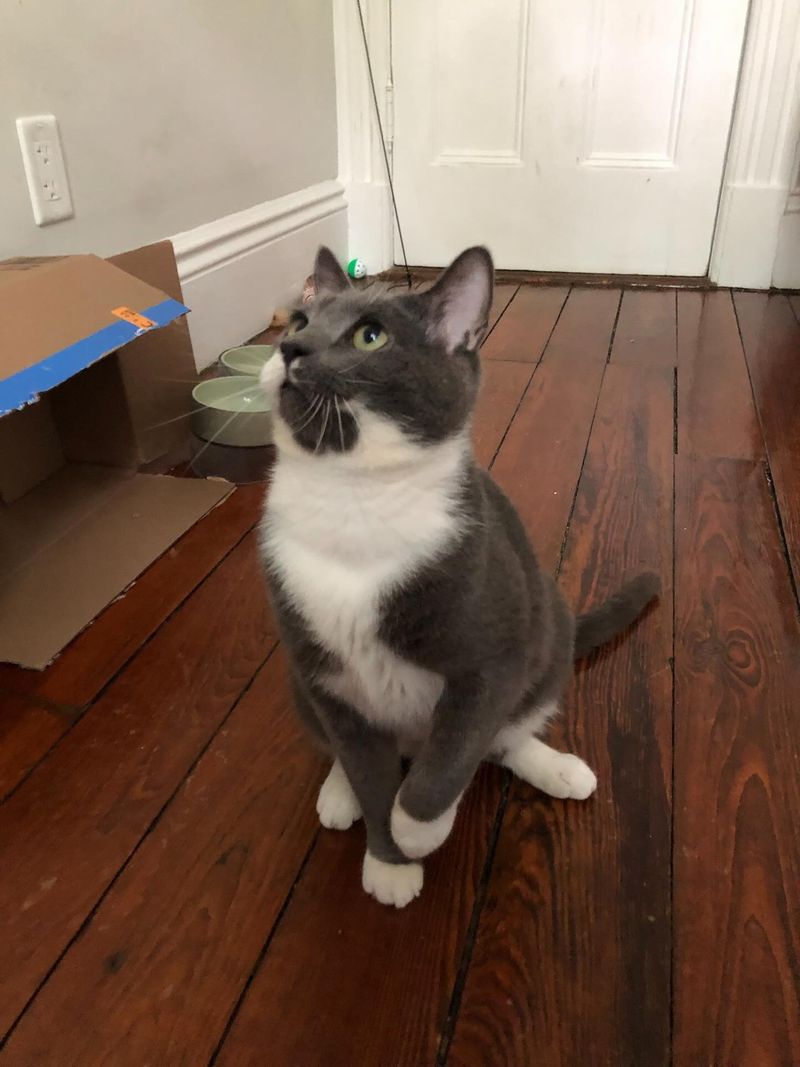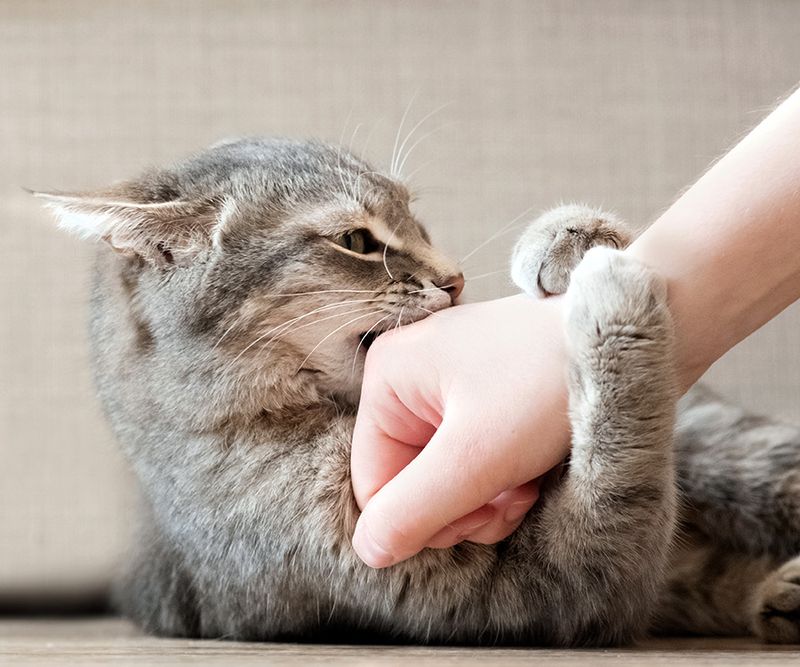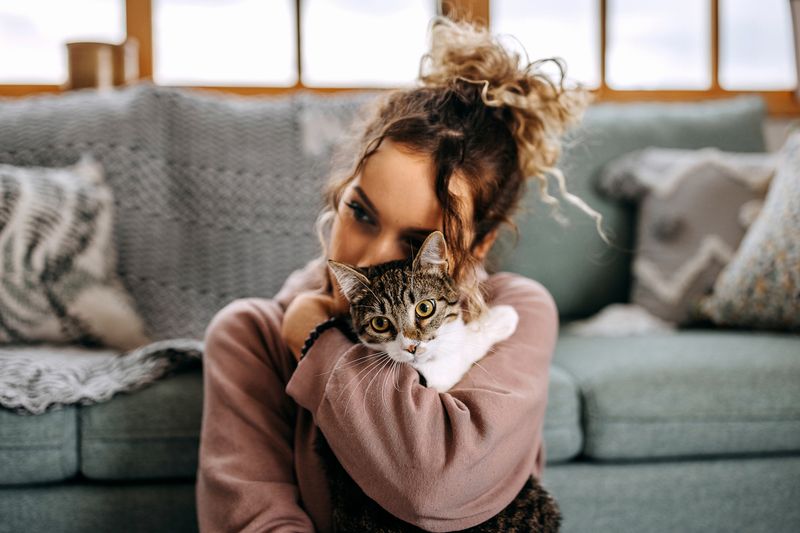📖 Table of Content:
- 1. Slow Blinking Shows Trust
- 2. Exposed Belly During Naps
- 3. Approaching You For Attention
- 4. Kneading Paws On Soft Surfaces
- 5. Regular Grooming Sessions
- 6. Playful Pouncing Returns
- 7. Vocal Communication Increases
- 8. Consistent Eating Habits Form
- 9. Relaxed Tail Positions
- 10. Seeking High Vantage Points
- 11. Nighttime Cuddles Emerge
- 12. Decreased Startle Response
- 13. Voluntary Lap Sitting Sessions
- 14. Stretching In Your Presence
- 15. Greeting You At The Door
- 16. Tolerating Gentle Handling
- 17. Purring During Contact
Bringing a rescue cat into a new home offers a unique blend of joy and challenges. Many rescue cats arrive with emotional and physical wounds that require patience and care to mend. Healing is a gradual process that often reveals itself through small, subtle shifts in behavior.
Understanding these behavioral changes is essential to recognizing when a rescue cat begins to feel secure and trust their surroundings. Each cat’s journey is different, but certain signals consistently indicate progress. Attentive observation helps build a stronger bond and supports the cat’s emotional recovery.
The process of gaining confidence and comfort can take time, but the rewards are immeasurable. Rescue cats may show signs of healing in quiet and sometimes unexpected ways. Recognizing these signals allows caregivers to respond with the right support at every stage.
1. Slow Blinking Shows Trust
Cats communicate affection through their eyes. When your rescue cat starts giving you slow blinks (sometimes called ‘cat kisses’), they’re showing they feel safe enough to be vulnerable around you. This non-verbal communication is a significant milestone, as cats only close their eyes in the presence of someone they deeply trust. Try responding with your own slow blink to strengthen your bond. Many rescue cats avoid eye contact initially, so this gesture signals they’ve begun to see you as family rather than a threat.
2. Exposed Belly During Naps
Rolling over to expose their tummy is a remarkable sign of trust from your once-wary rescue cat. The belly is a vulnerable area containing vital organs, and in the wild, cats protect this region at all costs. When your cat feels comfortable enough to sleep belly-up in your presence, they’re essentially telling you they feel secure in their environment. This position demonstrates they no longer feel the need to stay on high alert. Remember that while this display shows trust, many cats still don’t welcome belly rubs!
3. Approaching You For Attention
The day your rescue cat actively seeks you out for pets or attention marks a major turning point in your relationship. Previously fearful cats typically hide or maintain distance as a survival strategy. When your cat begins approaching you unprompted, headbutting your hand, or climbing into your lap, they’re showing they associate you with positive experiences rather than danger. This behavior indicates they’ve begun to form a social bond with you. Consistent gentle responses to these overtures will help reinforce their growing confidence.
4. Kneading Paws On Soft Surfaces
Those rhythmic pushing motions your cat makes with their paws – often called ‘making biscuits’ – signal comfort and contentment. This behavior dates back to kittenhood when they kneaded their mother’s belly to stimulate milk flow. When your rescue cat kneads blankets, your lap, or other soft surfaces, they’re experiencing feelings of security and happiness reminiscent of nursing. It’s a self-soothing behavior that indicates they feel relaxed enough to tap into those instinctual comfort mechanisms. Some cats even purr or drool while kneading, showing maximum contentment.
5. Regular Grooming Sessions
Cats in distress often neglect self-care. When your rescue cat establishes a consistent grooming routine, they’re showing improved mental health and physical comfort. Regular grooming indicates they no longer feel the need to remain vigilant against threats and can focus on maintenance behaviors. You might notice them spending more time bathing their fur, cleaning their paws, and maintaining their coat. This behavior is particularly significant in cats who arrived with matted fur or poor hygiene, as it demonstrates they now have the emotional bandwidth for self-care.
6. Playful Pouncing Returns
Traumatized cats rarely engage in play, as their survival instincts override recreational behaviors. When your rescue cat begins showing interest in toys, pouncing on string, or chasing toy mice, it’s a clear sign of healing. Play requires a sense of safety and the ability to temporarily lower defenses. Your cat’s willingness to engage in these behaviors indicates they no longer feel constantly threatened by their environment. Even brief play sessions signal progress, so celebrate these moments as evidence your cat is rediscovering joy and expressing natural behaviors.
7. Vocal Communication Increases
Many rescue cats remain silent during their adjustment period, conserving energy and avoiding drawing attention. As they heal, their vocal repertoire often expands dramatically. New meows, chirps, trills, and purrs indicate your cat feels comfortable expressing needs and emotions. This communication shows they expect a response from you – a sign they trust you’ll listen and care about what they’re saying. Pay attention to different vocalizations; each has meaning, from greeting chirps to conversational meows, all signaling your cat’s growing confidence in their relationship with you.
8. Consistent Eating Habits Form
Stress significantly impacts feline appetite. When your rescue cat establishes regular eating patterns and shows enthusiasm for meals, it signals diminishing anxiety levels. Consistent eating behaviors indicate your cat feels secure enough to lower their guard during vulnerable moments. You might notice them eating more predictable amounts, showing food preferences, or even getting excited at mealtime. This change is especially meaningful in cats who previously hid food, ate erratically, or showed food aggression due to resource insecurity in their past.
9. Relaxed Tail Positions
A cat’s tail works like an emotional barometer. Initially, rescue cats often keep their tails tucked, puffed, or twitching – all signs of fear or agitation. Progress shows when your cat begins displaying relaxed tail positions: gently curved, softly swaying, or held high with a slight curve at the tip while walking. These postures indicate they feel at ease in their surroundings. The transition from defensive tail positions to confident ones might be subtle, but it reveals their internal sense of security is growing stronger each day.
10. Seeking High Vantage Points
Cats naturally prefer elevated positions for security, but traumatized cats often hide under furniture instead. When your rescue cat begins claiming high spots like windowsills, cat trees, or shelves, they’re showing increased confidence. This behavior indicates they feel secure enough to survey their territory openly rather than hiding. It’s a powerful sign they’re claiming space in your home and establishing themselves as a permanent resident. Creating accessible vertical spaces can further encourage this positive behavior and support their continued healing journey.
11. Nighttime Cuddles Emerge
Sleep represents extreme vulnerability for cats. When your rescue cat chooses to sleep beside you – especially at night – they’re demonstrating profound trust in your protection. This behavior shows they’ve begun to view you as part of their safe space rather than a potential threat. Some cats might start by sleeping at the foot of the bed, gradually moving closer as their comfort increases. The warmth-seeking behavior during rest periods indicates they associate you with security and comfort, a significant emotional milestone in their recovery process.
12. Decreased Startle Response
Rescue cats often jump at the slightest sounds or movements as their nervous systems remain on high alert. A healing cat gradually shows a diminished startle response to everyday noises and activities. You might notice they no longer bolt when the refrigerator hums or when you stand up suddenly. This change indicates their brain is recategorizing normal household sounds as non-threatening, a crucial step in adapting to domestic life. Their more measured reactions demonstrate they’re developing a sense of what belongs in their environment versus what requires caution.
13. Voluntary Lap Sitting Sessions
The first time your rescue cat voluntarily jumps into your lap marks a breakthrough moment of trust. This intimate contact puts them in a vulnerable position where escape routes are limited. Their willingness to enter your personal space shows they’ve begun to associate you with safety rather than danger. Pay attention to their body language during these sessions – relaxed muscles and slow breathing indicate genuine comfort. Even brief lap visits are meaningful; resist the urge to restrain them, allowing them to set boundaries that make them feel secure.
14. Stretching In Your Presence
Full-body stretches temporarily leave cats defenseless. When your rescue cat feels comfortable enough to stretch completely in your presence – extending legs, arching back, and exposing their underside – they’re demonstrating significant trust. This seemingly simple action reveals they no longer perceive you as a threat requiring constant vigilance. These moments of vulnerability indicate they feel secure enough to momentarily let their guard down. Morning stretches or post-nap extensions are particularly telling, as they show your cat wakes up feeling safe rather than immediately alert for danger.
15. Greeting You At The Door
Coming to the door when you arrive home represents a significant shift in how your rescue cat perceives you. This behavior indicates they view you as a positive presence worth acknowledging rather than someone to hide from. Door greetings show they’ve begun to recognize your routine and look forward to your return. Some cats might run to the door, while others might watch from a nearby perch – both are meaningful depending on your cat’s personality. This anticipatory behavior demonstrates they’ve formed an attachment and consider you an important part of their world.
16. Tolerating Gentle Handling
Many rescue cats initially resist being touched, especially in sensitive areas like their paws or tails. Increased tolerance for gentle handling signals growing trust in your intentions. Progress might look like allowing brief paw touches during play or accepting gentle strokes along their back without flinching. This newfound tolerance makes necessary care like nail trims or grooming less stressful for both of you. Their willingness to be handled indicates they no longer associate the human touch with negative experiences from their past, a crucial psychological shift in their recovery.
17. Purring During Contact
The vibrating sound of purring signals contentment and security in most contexts. When your rescue cat begins purring during physical contact with you, they’re expressing genuine pleasure in your presence. This sound indicates their nervous system has shifted from stress response to relaxation during interactions. Early in recovery, some cats purr from anxiety, but purring accompanied by relaxed body language – like half-closed eyes or loose muscles – confirms positive emotions. The increasing frequency and duration of purring sessions reflect their growing comfort in your relationship.

